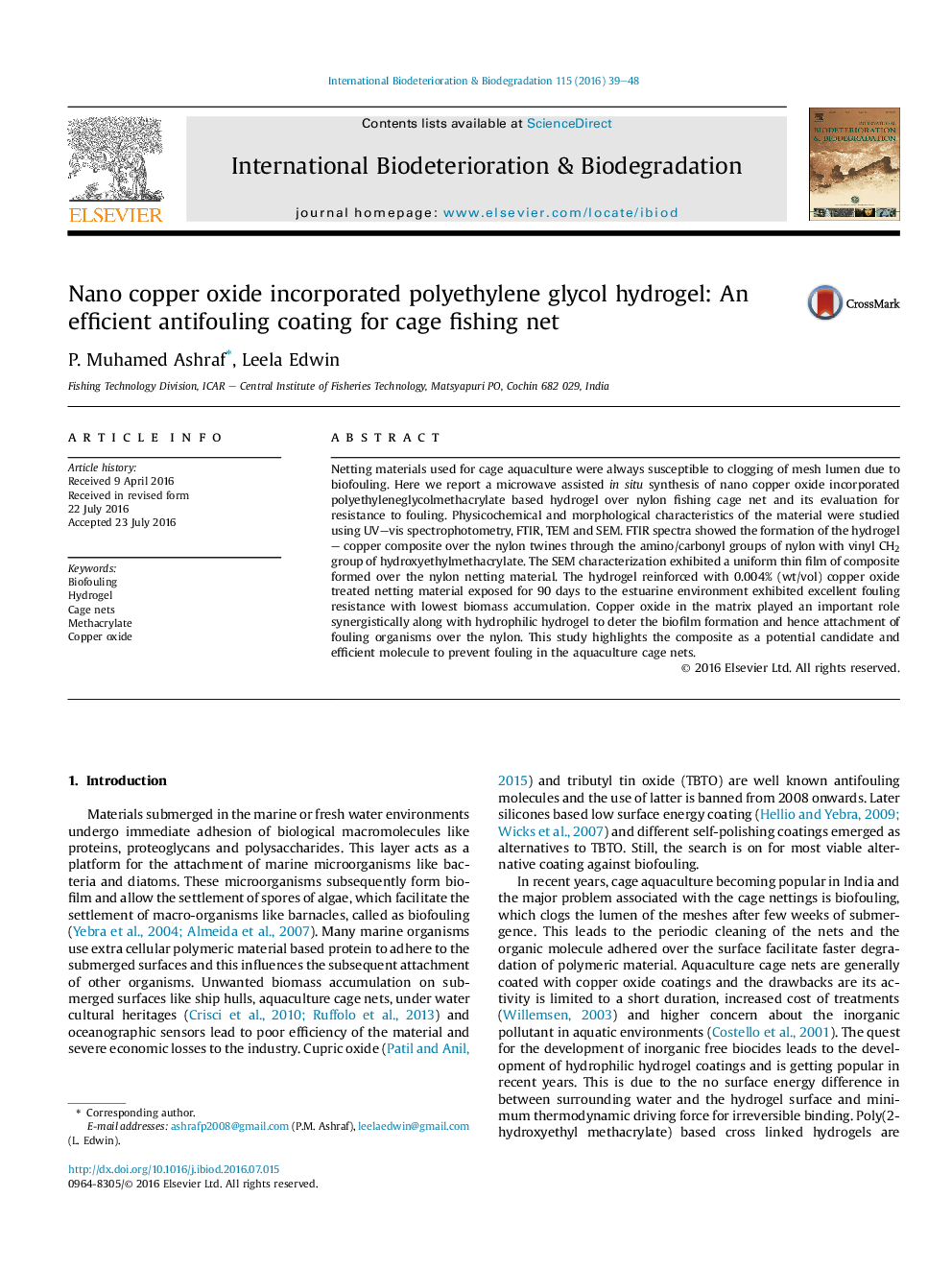| Article ID | Journal | Published Year | Pages | File Type |
|---|---|---|---|---|
| 4364158 | International Biodeterioration & Biodegradation | 2016 | 10 Pages |
•Nano copper oxide incorporated polyethyleneglycol hydrogel synthesized in situ over polyamide nettings.•Evaluated the characteristics through FTIR and SEM.•Field exposure studies showed excellent resistance to fouling.•The material exhibited resistance to protein adhesion.•Nano copper oxide incorporated hydrogel is a potential molecule for aquaculture cage nettings.
Netting materials used for cage aquaculture were always susceptible to clogging of mesh lumen due to biofouling. Here we report a microwave assisted in situ synthesis of nano copper oxide incorporated polyethyleneglycolmethacrylate based hydrogel over nylon fishing cage net and its evaluation for resistance to fouling. Physicochemical and morphological characteristics of the material were studied using UV–vis spectrophotometry, FTIR, TEM and SEM. FTIR spectra showed the formation of the hydrogel – copper composite over the nylon twines through the amino/carbonyl groups of nylon with vinyl CH2 group of hydroxyethylmethacrylate. The SEM characterization exhibited a uniform thin film of composite formed over the nylon netting material. The hydrogel reinforced with 0.004% (wt/vol) copper oxide treated netting material exposed for 90 days to the estuarine environment exhibited excellent fouling resistance with lowest biomass accumulation. Copper oxide in the matrix played an important role synergistically along with hydrophilic hydrogel to deter the biofilm formation and hence attachment of fouling organisms over the nylon. This study highlights the composite as a potential candidate and efficient molecule to prevent fouling in the aquaculture cage nets.
